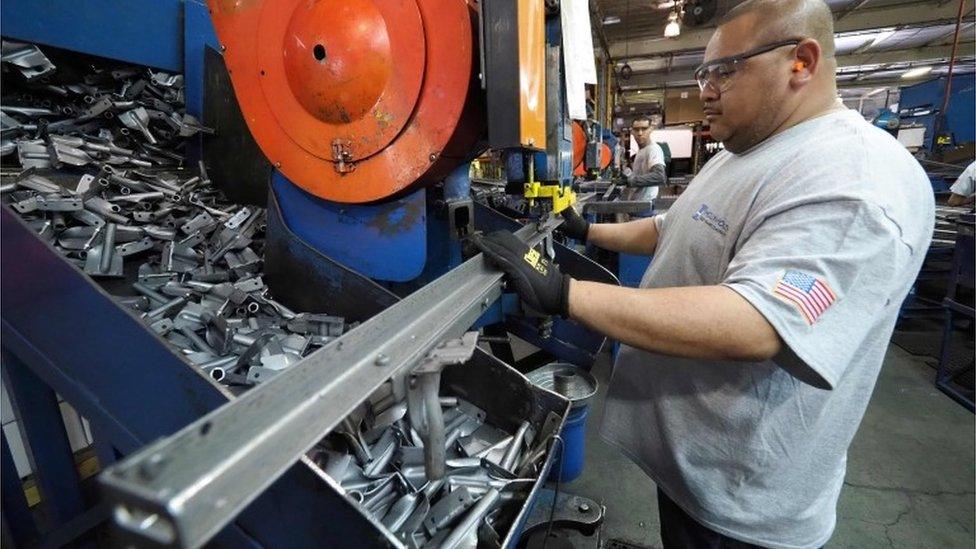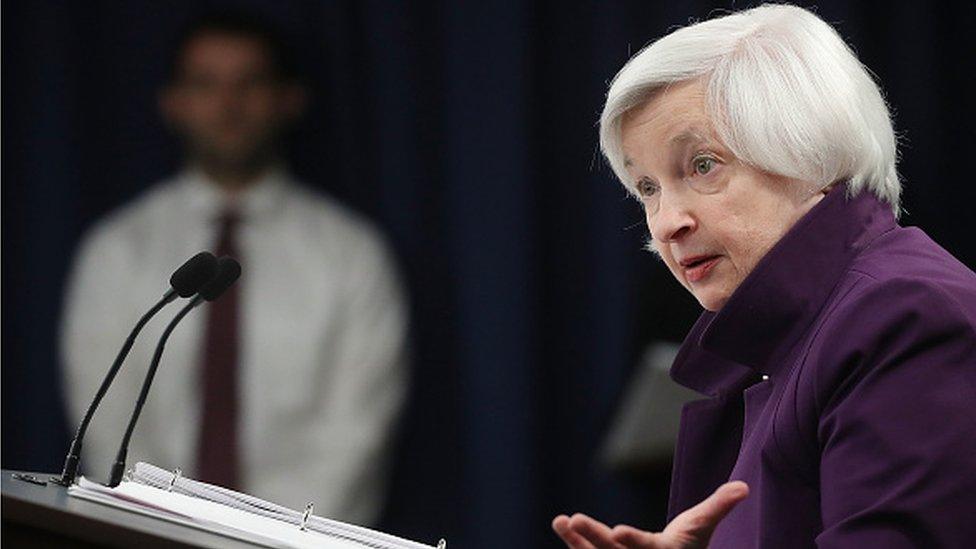US jobs growth faster than expected
- Published

US employment rose by more than expected last month, but wage growth remained subdued, latest figures show.
The economy added 222,000 jobs in June, the US Department of Labor, external said, and job creation in April and May was higher than previously estimated.
However, despite the job gains and a low 4.4% unemployment rate, wage growth remained tepid.
Average wages rose 2.5% year-on-year, which analysts said was a sign the market still had room to improve.
"Once again, the buzz kill on the jobs report is the lack of more substantial wage growth," said Mark Hamrick, a senior economic analyst for Bankrate.com, which tracks interest rates.
"This suggests that we've not yet checked off the 'full employment' box, meaning more progress can be extracted from the job market."
Vote of confidence
Economists have expected job growth to slow and wages to rise, as more people are employed and firms have a harder time hiring.
Job growth had appeared to decelerate in April and May, but in its latest release the Labor Department revised the job creation estimates to 207,000 in April from 174,000, and to 152,000 in May from 138,000.
Employment growth has averaged 180,000 per month so far this year, in line with the average monthly gain of 187,000 in 2016.
The job gains have encouraged more people to start looking for work, and this was behind a slight increase in the unemployment rate to 4.4% in June from 4.3% in May.
"The unemployment rate rose slightly in June, but it was because of more people looking for work, a vote of confidence in the job market," wrote Gus Faucher, chief economist at PNC Financial Services, in a note.
Some of the strongest employment growth in June came in the fields of health care and social assistance, financial activities and mining. Government employment also increased.
But there are still more than five million Americans working part-time who would like to have full-time work, according to the Labor Department's report.
Analysts said the job gains bolster the case for the Federal Reserve to continue to raise interest rates, even though inflation remains lower than policymakers at the US central bank would like.
"What matters to the Fed is that the rebound in payrolls strongly supports their view that the soft-looking spring data were 'transitory', and that the trend in the unemployment rate is guaranteed to fall further if payroll gains are sustained at anything like their June pace," said Ian Shepherdson, chief economist at Pantheon Macroeconomics.
- Published29 June 2017

- Published14 June 2017
